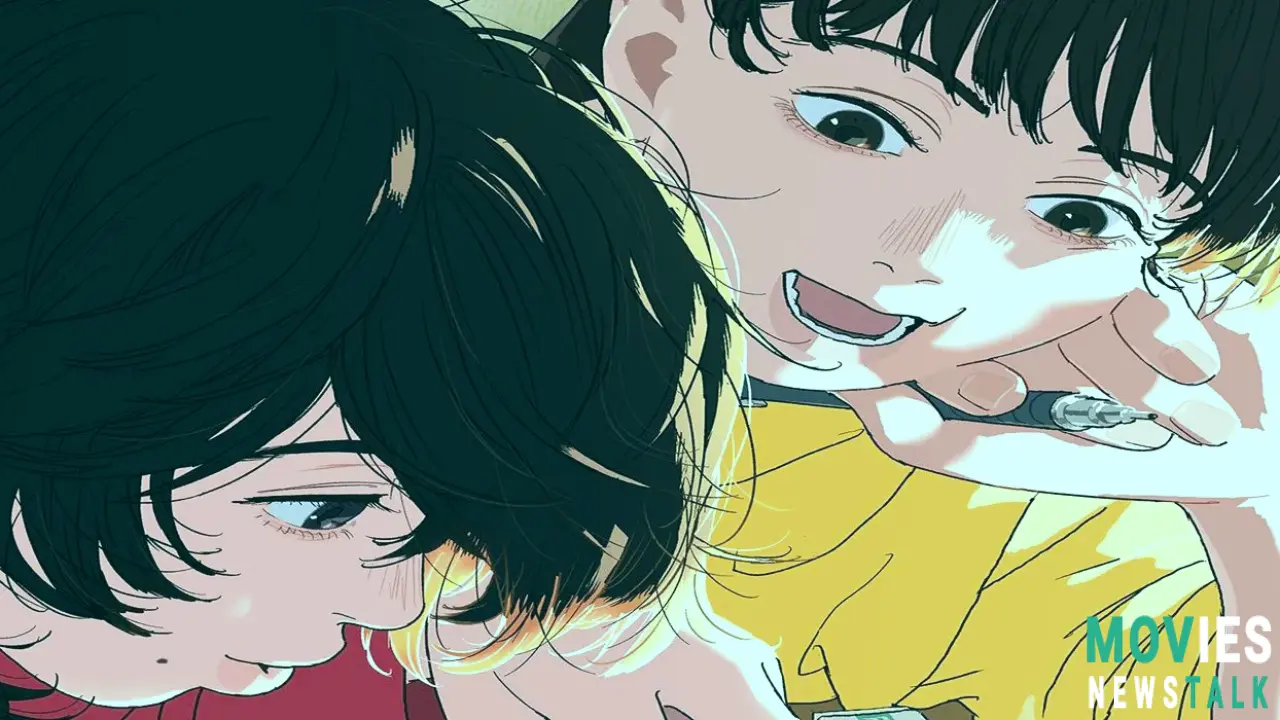Review of Look Back Anime Movies: Expertly Adapted Tatsuki Fujimoto's Genius
With its emotional depth, beautiful images, and moving narrative, Tatsuki Fujimoto's Look Back—the film version of his critically praised manga—has enthralled viewers all around. Examining why Look Back is a must-watch for anime enthusiasts and evidence of Fujimoto's artistic ability, this review explores the intriguing features of the movie.
Immersion Visuals and Animation: Realizing Fujimoto's Art
Look Back's amazing graphic look grabs viewers right away. With great clarity and fluidity, Studio Durian's painstaking animation faithfully captures Fujimoto's unique art style onto the screen, so bringing the characters and their universe to life. From the tender moments of friendship to the heart-wrenching depths of grief, the film's animation excels in its ability to catch the subtleties of human feeling.
The art style of Tatsuki Fujimoto combines simplicity and depth.
Unique mix of simplicity and depth defines Fujimoto's artistic approach. Though they seem to be rather simple, his drawings communicate a great spectrum of emotions and subtleties. The animation of Studio Durian masterfully reflects this core, enabling viewers to feel the depth of Fujimoto's artistic ability.
Superior Direction: Boosting the Emotional Impact
The direction of Look Back sharpens the narrative to unprecedented standards. With a sharp awareness of timing, camera work, and music, Kiyotaka Oshiyama—known for his superb work on titles like Flip Flappers and Doraemon The Movie: Nobita's New Dinosaur—guides the film Oshiyama's direction emphasizes Look Back's emotional center, so amplifying the significance of its salient events.
Excellent Perspective and Camerawork
Immersion of viewers in the story depends much on the camera work of the movie. Expertly crafted to elicit particular emotions and viewpoints, scenes like Kyomoto's search of Fujino from a first-person perspective and Fujino's happy dance in the rain The story gains still another level of complexity from this imaginative application of camerawork.
Silence and Music: Serving the Emotional Terrain
The soundtrack of the movie is painstakingly chosen to harmonize with the images to produce a moving experience. Look Back deftly employs silence as well as music to accentuate the emotional impact of its scenes so enabling viewers to relate to the inner conflict and victories of the characters.
New Additions: Embracing an Already Excellent Story
The film version of Look Back features subdued but significant additions to the original manga. These fresh scenes help to highlight the story's themes and the character development. For instance, the story gains complexity and nuance from Fujino's manga's animation and the use of perspective to underline the widening distance between Fujino and Kyomoto.
Manga by Fujino: a window into her creative spirit
The way Fujino's manga is animated offers a window into her artistic energy and love of narrative. These sequences underline Fujino's artistic ability and her need of self-expression via her work.
A Grounded in Realism Story Celebrating Friendship
The story of Look Back is evidence of the strength of friendship and the lifelong influence of loss. Fujimoto's work creates sympathetic characters who negotiate life's complexity, their path connecting with viewers on a very personal level.
Friendship between Fujino and Kyomoto: a link spanning loss
The main relationship in the movie—between Fujino and Kyomoto—is a moving examination of the ties developed in early years. Their friendship reminds us of the value of human connection and is both lovely and terrible.
Masterpiece of Adaptation: Improving the Source Material
The film adaptation of Look Back is an amazing illustration of how to bring a cherished manga to life on screen. Through the power of animation and direction, studio Durian and director Kiyotaka Oshiyama have not only caught the core of Fujimoto's storytelling but also improved its impact.
a Cinematic Experience Changing the Manga
The musical selections, camera work, and timing of the movie combine to produce a cinematic experience that enhances the source material. Fans of the manga as well as everyone who enjoys great narrative and striking visuals should definitely check out Look Back's film adaptation.
Finally, consider looking back at a must-watch anime film.
Look Back is evidence of both the power of adaptation and Tatsuki Fujimoto's storytelling's genius. Look Back is a must-watch anime movie that will stay with viewers long after the credits roll thanks to its amazing animation, superb direction, and very moving story. This movie honors the beauty of narrative, the strength of friendship, and the ongoing effect of loss.

